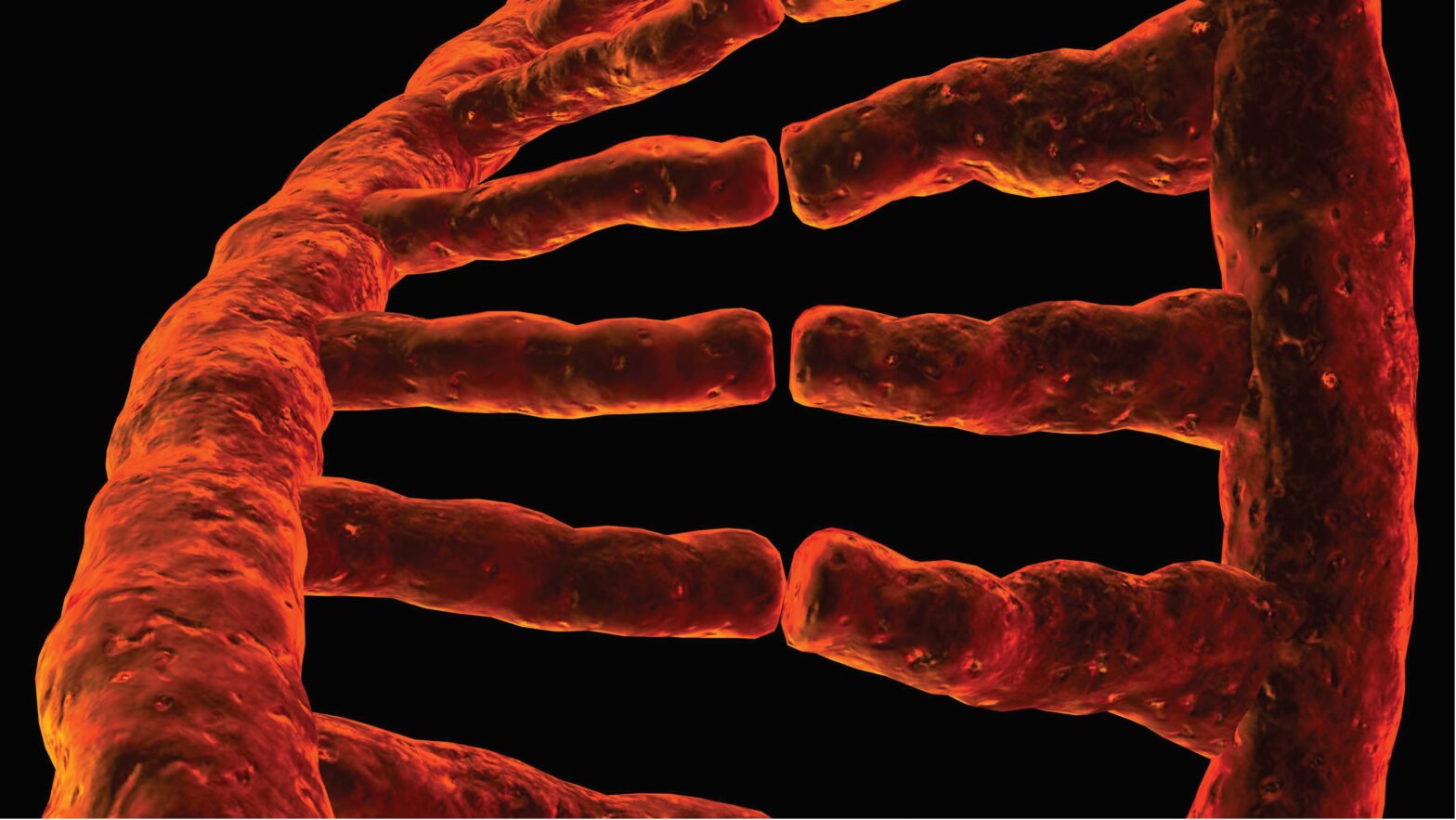Every human being possesses 46 chromosomes in his or her DNA (except for people born with chromosomal abnormalities). Though microscopic, DNA has a structure known as a double helix, as seen in this computergenerated image. The egg and sperm each contain 23 chromosomes—exactly one half of each parent’s DNA. At the moment of fertilization, the 23 chromosomes from the sperm combine with the 23 chromosomes from the egg to create a unique human being with 46 chromosomes. Every detail of the child’s development—sex, eye color, hair color, fingerprints, and more—is determined at this point.
Essential Facts
• The sex of the new human being formed at fertilization is determined solely by the sperm. Every egg carries a female sex chromosome, designated by the letter X. Each sperm carries either a female sex chromosome or a male sex chromosome, designated by the letter Y. If a “Y” sperm fertilizes an egg, the new person will be male—XY. If an “X” sperm fertilizes an egg, the new person will be female—XX.
• Every time that a sperm fertilizes an egg, the genetic material from the two cells combines in a completely new arrangement, which is why siblings with the same biological parents are unique (except for identical twins). However, because each sibling still possesses one half of each parent’s genetic code, there are often shared traits among brothers and sisters.
• Because every baby possesses exactly one half of the mother’s and father’s chromosomes, each baby possesses one quarter of each grandparent’s chromosomes.
• Identical twins are formed when one egg is fertilized by one sperm to create one zygote, which then divides into two separate embryos. These two embryos will develop into genetically identical people because they share the same genetic code.
• In the case of fraternal twins, two eggs must be released during ovulation. Both of these eggs must be fertilized and implant into the uterine wall. Although these twins will gestate and be born at the same time, they will not share the same genetic code. In fact, other than having the same birthday, these siblings will be no different from siblings who happen to be born several years apart.
• DNA is tightly coiled within each cell of the human body. If you were to uncoil all of the DNA in the cells of an adult human being and arrange it in a straight line, it would exceed 63 billion miles in length—long enough to travel back and forth to the sun 340 times!

